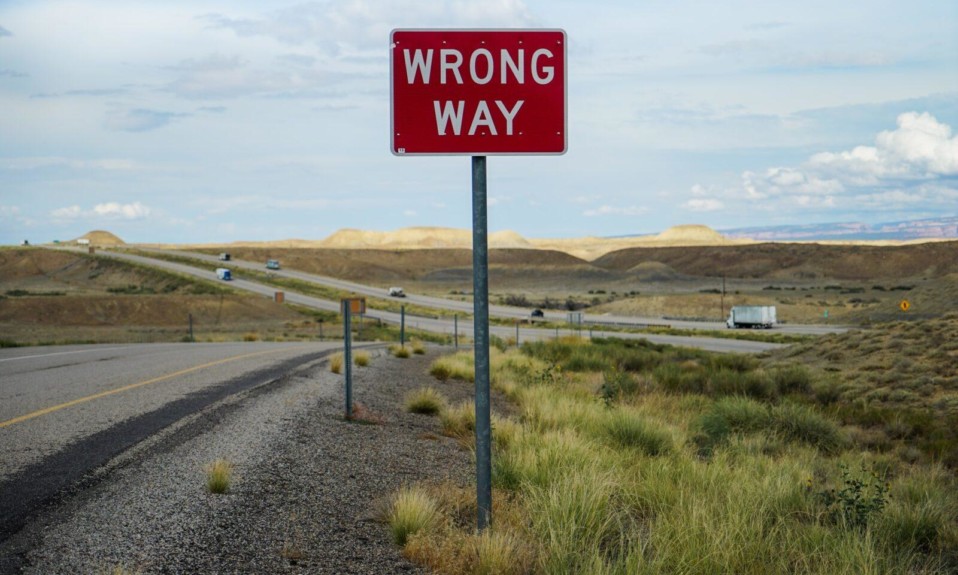| February 2008 |
 In the early 1990s, Rimrock Foundation was visited by producers and camera crews from the popular CBS news program 48 Hours. It was a time when legalized wagering was beginning to experience explosive growth, due to largely to tribal expansions into the casino business, and 48 Hours had come to Rimrock’s facility in Billings, Montana, to examine some of the fallout from gambling’s rapid spread. “They spent about a week here, and they were fascinated by what they found out,” says Rimrock CEO David Cunningham, adding that it was clear to the 48 Hours journalists when they left that there was indeed a very dark underbelly to wagering’s blistering pace of expansion throughout America. In the early 1990s, Rimrock Foundation was visited by producers and camera crews from the popular CBS news program 48 Hours. It was a time when legalized wagering was beginning to experience explosive growth, due to largely to tribal expansions into the casino business, and 48 Hours had come to Rimrock’s facility in Billings, Montana, to examine some of the fallout from gambling’s rapid spread. “They spent about a week here, and they were fascinated by what they found out,” says Rimrock CEO David Cunningham, adding that it was clear to the 48 Hours journalists when they left that there was indeed a very dark underbelly to wagering’s blistering pace of expansion throughout America.
What the journalists found at Rimrock, a venerable non-profit that this year is celebrating 40 years in the addiction treatment business, were the many people who were being treated there for compulsive wagering addictions, people whose lives were destroyed by their inability to control their impulse to bet. Rimrock’s reputation as among the nation’s leading centers for the treatment of gambling addiction is what attracted 48 Hours’ attention, and, over the past 15 years or so since, Rimrock’s expertise and reputation in the clinical specialty have only grown. Driving Rimrock’s entry into the speclialty, as well the expansion of its expertise – in the 1980s, the renowned Dr. Robert Custer, who more than any other individual pioneered the treatment of compulsive wagering, came to the foundation to train staff – has been strong and very fast growing demand for gambling addiction treatment services, especially from Montana. “Here in Montana, it is wide open when it comes to gambling, perhaps even more so than Nevada,” says Rimrock COO Mona Sumner, who points out that, in Montana, there has been a proliferation of “Mom and Pop” style gambling, with games like video poker just around the corner practically everywhere. Capacity Utilization Thus, at Rimrock, nearly 15 percent of the foundation’s 110 residential beds are now filled by gambling addicts, and a whopping 30 percent of the non-profit’s outpatient capacity is now devoted to treating gamblers. And since Dr. Custer started the natio’s first gambling program, in 1972 at a VA hospital in Ohio, the number of programs has grown steadily. But it is still likely that very, very few of the estimated 3 million Americans with a gambling issue – ranging from moderate to highly pathological – are getting help for their problem, and that the “treatment gap” for gambling addiction is probably far wider than it is even for substance addiction. And it remains extremely hard for gambling treatment providers to get paid, as families are often bitter and unwilling to pay for treatment, while, due to the very nature of the illness itself, the addicts themselves when ready for treatment are also flat broke. And only about a dozen states, out of the 48 where gambling in some form is now legal, provide public funds for treatment, with health insurers also providing virtually nothing.  “Prevalence hasn’t increased much despite the big jump in the amount of gambling overall,” says Keith Whyte, executive director of the National Council on Problem Gambling. “But we’re seeing a large increase in the severity of gambling problems, and those are the ones that really need treatment.” One guy who understands severe gambling addiction is Michael Osborne, who lost everything, including his former career in real estate, because of a pathological gambling habit. A graduate of Baltimore’s Harbour Pointe gambling center, at 20 years one of the nation’s oldest programs, Osborne also had an entrepreneurial bent. And when the center was teetering on the edge of insolvency a few years ago, Osborne took over the organization. Like many in the treatment industry, Osborne got a boost from national publicity when he appeared on Bryant Gumbel’s HBO sports program Real Sports. And, since then, Osborne has definitely tapped into the growing demand for gambling treatment services. He has turned Harbour Pointe around, and this year will complete a capital improvement of the downtown Baltimore facility that cost hundreds of thousands of dollars. Harbour Pointe, a small center with just eight beds, gets virtually all of its revenues from private pay clientele, which are culled mostly through an aggressive Internet marketing plan.  And new players like Williamsville Wellness, a Virginia-based gambling center startup, have begun to surface, hoping to tap into the growing demand for gambling treatment services. But professional referents often do well to be wary of untested startups, and it appears that Williamsville Wellness should certainly be no exception to this rule. In an apparently aggressive attempt to attract clients for his new center, founder Robert Cabaniss, Jr., according to the National Council on Problem Gambling, made claims that his new center had a certification from the council, when, in fact, no such certification exists. Says Council Executive Director Keith Whyte: “The council wrote Williamsville Wellness ordering them to cease and desist making the claims.” And, according to Whyte, the offending ads appear to have been pulled from circulation. Cabaniss Jr., whose Williamsville Wellness center is private pay, located on a 400 acre spread, did not respond to an inquiry about the reportedly unfounded claims. |











